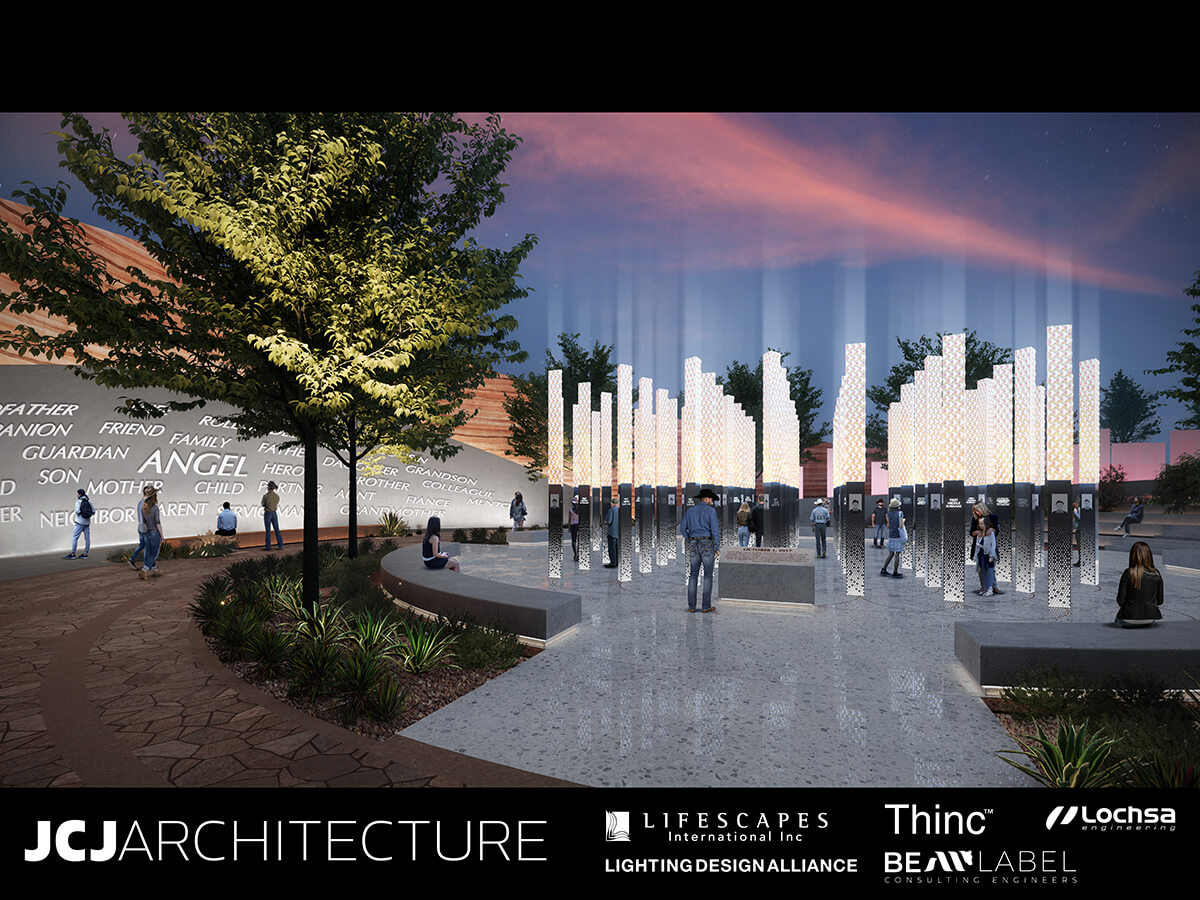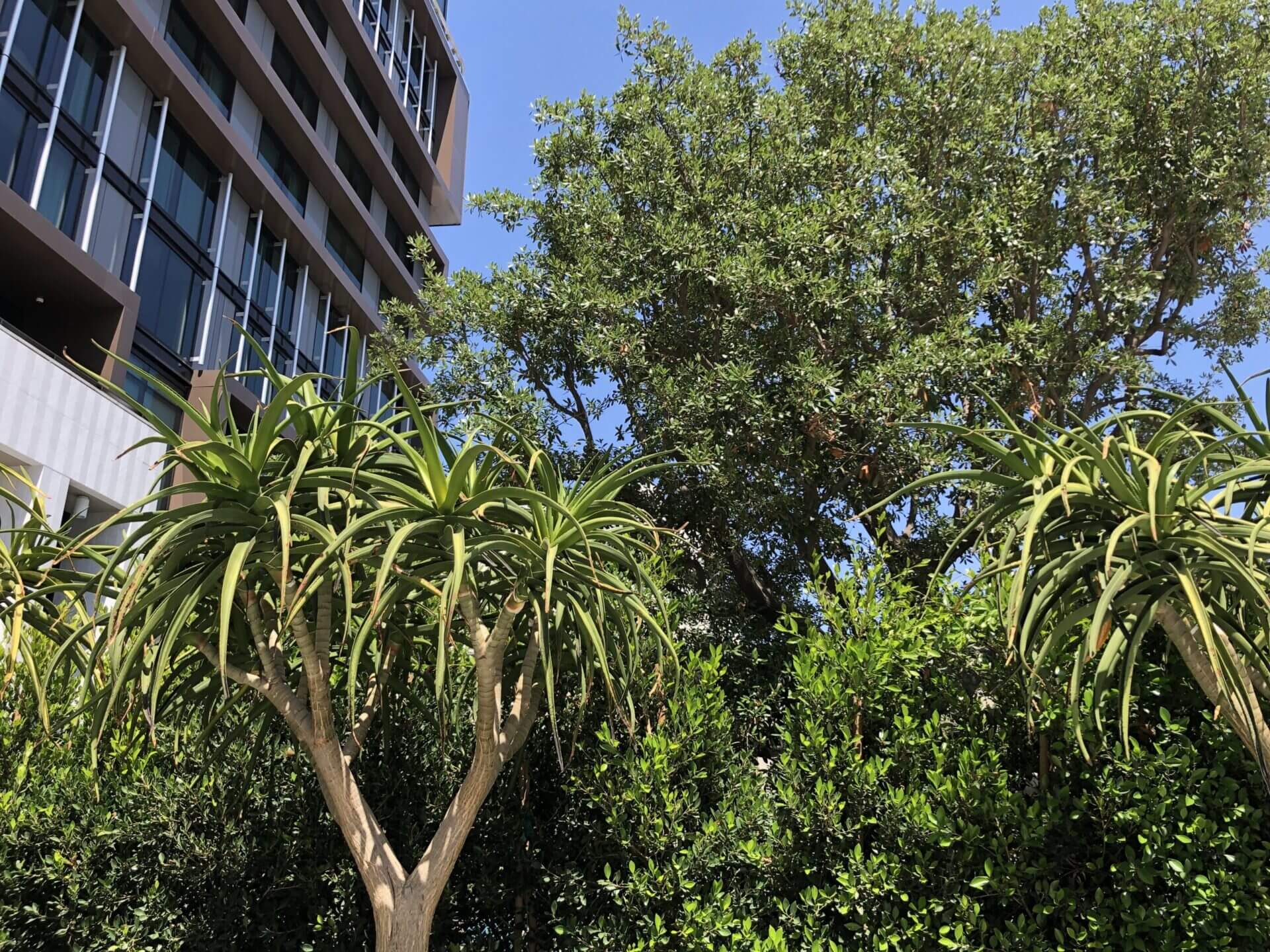We’re living in a fast-paced, on-demand society – and retail shopping behavior has changed drastically over the years. In a recent report, the National Retail Federation found that whether in-store or online, shoppers typically seek to buy a certain item rather than just browsing – and 73% of those surveyed said that’s also the case when shopping at brick-and-mortar stores. This means visitors to retail developments tend to be on a round-trip path to get in and out as quickly as possible.
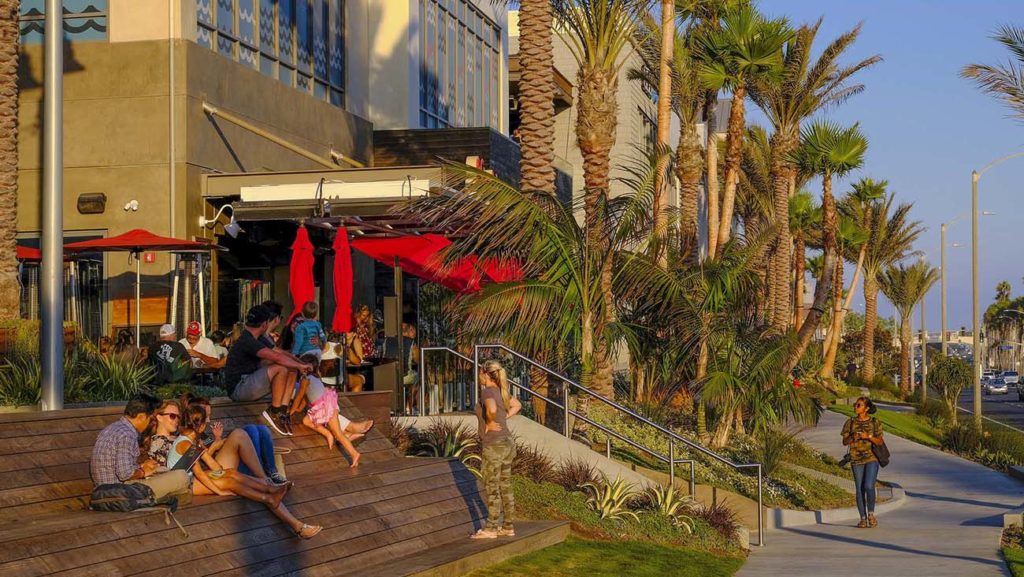
How can we, as designers, slow them down, improving their experience so they want to spend more time on the property? How do we create places that allow them to meet, play and socialize while shopping? We must change our thinking of the store as the ultimate reason for the journey. A well designed and interactive retail landscape itself should be the real destination.
When creating an appealing ‘destination’ environment where people want to spend time, while also shopping and dining, it’s best to involve the entire design team (developer, planner, architect and landscape architect) from the beginning of a project. We at Lifescapes International believe this meeting of minds is the key to a unified vision for the property.
Once united, the team can discuss integrating the following aspects into retail developments:
Create a setting that feels like it’s always been there
Make the project feel comfortable and draw guests in, so they want to stay for extended periods.
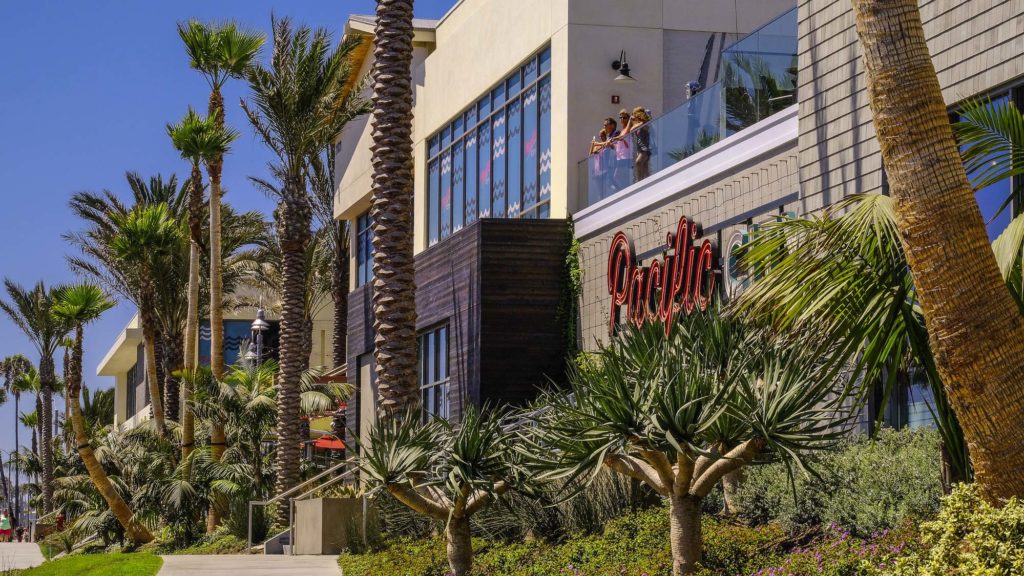 To start, contextualism is key. Designing a natural link between architecture and its landscape – to tie together past and present or showcase culture and tradition – will help drive a shared understanding among visitors and increase interest in visiting the space. Our projects with this thought in mind include Pacific City in Huntington Beach, Calif. – reflecting that ‘surf city’ SoCal beach vibe – and The Americana at Brand in
To start, contextualism is key. Designing a natural link between architecture and its landscape – to tie together past and present or showcase culture and tradition – will help drive a shared understanding among visitors and increase interest in visiting the space. Our projects with this thought in mind include Pacific City in Huntington Beach, Calif. – reflecting that ‘surf city’ SoCal beach vibe – and The Americana at Brand in  Glendale, Calif. – which extends the existing cityscape of downtown Glendale and integrates a true central park for the entire city to enjoy.
Glendale, Calif. – which extends the existing cityscape of downtown Glendale and integrates a true central park for the entire city to enjoy.
Once your property has context – the careful consideration and understanding of consumer preferences, while incorporating people-friendly areas into every designed environment, is critical to a retail development’s success. With this insight comes the ability to create a landscape setting for the retail to “happen in” – meaning the landscape design should capture visitors’ attention, draw interest in the area, and encourage shopping, dining, and relaxation in the same visit. Avoid building a retail development and adding in landscape design elements as an afterthought.
We must never forget that a visitor’s first impression is lasting. Influencing the perception of longevity in your space can be tied to creating a layered softscape design, especially planting large, mature trees. They will contribute to a sense of place, give a sense of intimacy and comfort, provide shade, and more – effectively making visitors feel like the property and environment has been around for a long time and will continue to exist for years to come.
Focus on placemaking
With the emergence of online shopping, a strong focus is on creating environments where customers can do more than make a purchase and leave. Placemaking is vital to ensure visitors congregate, linger, and enjoy their surroundings regardless of if they stop to shop or dine.
The combination of garden and fountains, bountiful seating, flower beds and mature trees, play areas, programmed activities and more can make properties comfortable and inviting. Give them a reason to stay, and consumers will become extended guests and repeat visitors.
One such example is The Veranda – a retail development project in Concord, Calif., which boasts 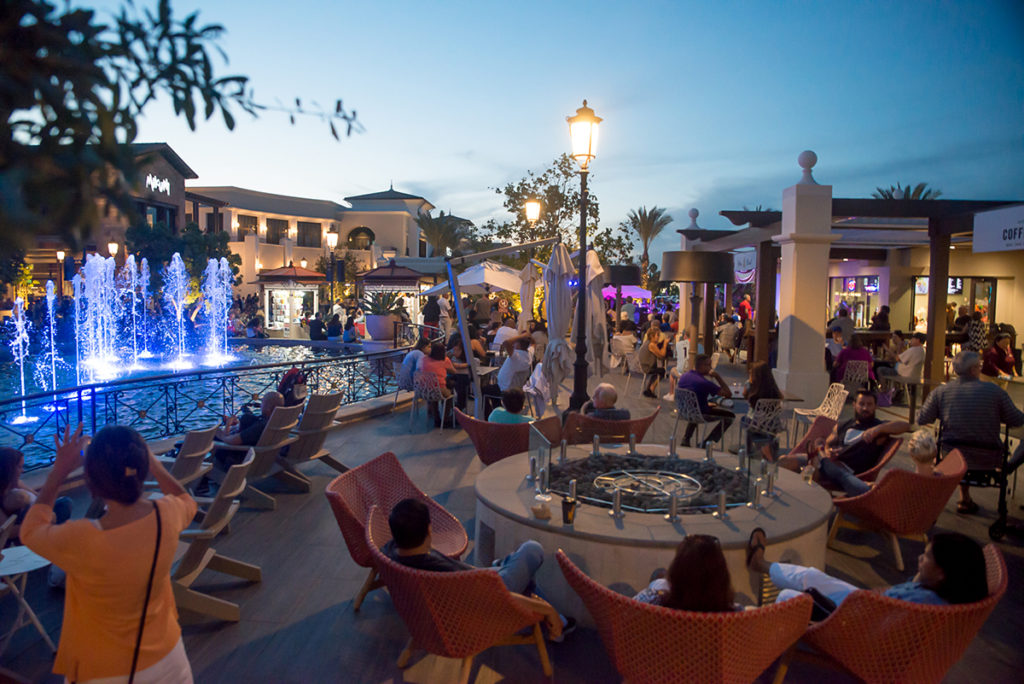 375,000 square feet of open-air, multi-functional space where the local community can shop, dine, relax and play. Key in its design is the careful integration of accessible parking, lush, carefully planned landscapes and clean, modern design elements. There are ‘mini-destinations’ for visitors to come and interact with each other, grab a bite to eat, sit among the enclaves around a warm fire pit, enjoy and listen to the colorfully lit water fountain. . .ultimately translating to longer time on the property. Encouraging people to come out requires more than shopping, it requires engaging them, which should be an early consideration when planning a retail lifestyle center.
375,000 square feet of open-air, multi-functional space where the local community can shop, dine, relax and play. Key in its design is the careful integration of accessible parking, lush, carefully planned landscapes and clean, modern design elements. There are ‘mini-destinations’ for visitors to come and interact with each other, grab a bite to eat, sit among the enclaves around a warm fire pit, enjoy and listen to the colorfully lit water fountain. . .ultimately translating to longer time on the property. Encouraging people to come out requires more than shopping, it requires engaging them, which should be an early consideration when planning a retail lifestyle center.
Bring people together at the ‘heart’ of your property
At Lifescapes, we’re flipping the adage, “home is where the heart is.” Instead, the heart is where ‘home’ or ‘home base’ is. In retail design, the heart is a key element; it can be a fountain, a clock tower, a center point that draws attention – essentially something iconic that visitors can remember and meet at. We want to give reason to pause, relax and take a load off.
This focal point also doubles as a central space to host events and provide entertainment options for consumers and guests. The environment should spur feelings of comfort and promote communication and relaxation. This practice of utilizing open space as an entertainment area is a simple yet effective way of increasing the length of a guest’s stay at the retail property, and due to its changeability, encourages repeat visits throughout the year.
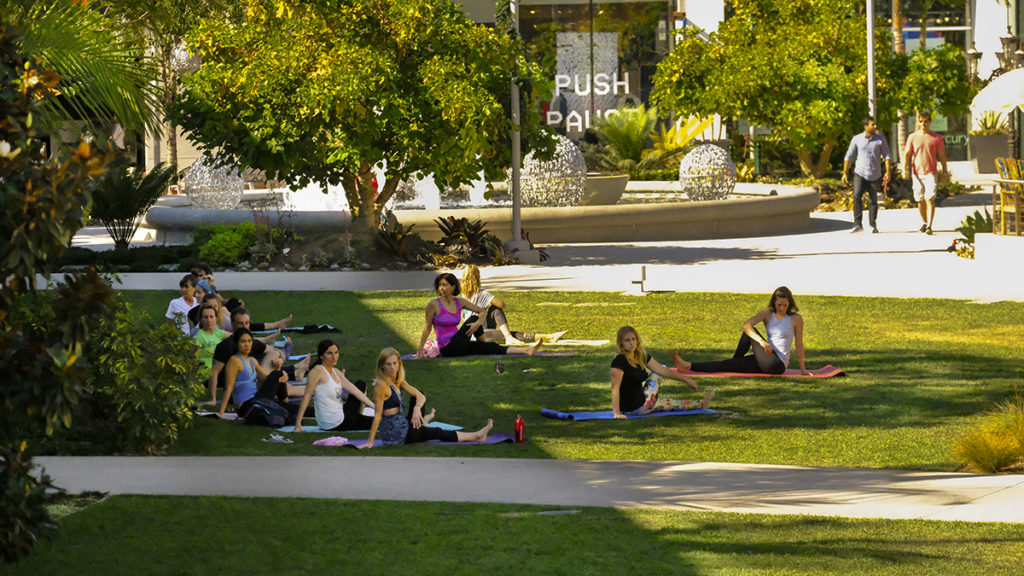 At the heart of the 11-acre shopping center, The Point in El Segundo, Calif., we designed the retail experience around an engaging central park that, through its visibility and openness, allows for a variety of uses. Programmed activities from concerts, pop up store events, children’s art classes, spin classes and yoga create a sense of community and drive visits in an area with very few places for residents to come together in.
At the heart of the 11-acre shopping center, The Point in El Segundo, Calif., we designed the retail experience around an engaging central park that, through its visibility and openness, allows for a variety of uses. Programmed activities from concerts, pop up store events, children’s art classes, spin classes and yoga create a sense of community and drive visits in an area with very few places for residents to come together in.
Our focus in designing retail environments is, above all, the guest experience. Research proves that there is a direct correlation between a guest’s time on the property and the total amount that they spend on retail, dining, and other amenities – so it’s key to explore implementing as many of the above themes as possible early on in the planning process.
At Lifescapes, we’re always looking for innovative ways to create inviting environments for guests – and at the same time, effectively monetize open space and leverage placemaking to generate profits for clients. By creating “destinations within destinations,” both large and small groups of consumers can enjoy the experiences of the property, so much so that they want to return again and again.

